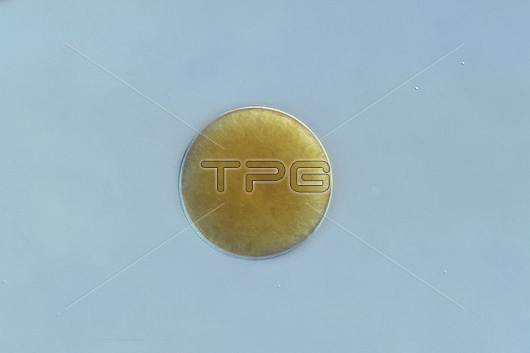
Fertilised egg of bladderwrack (Fucus vesiculosus) seaweed, light micrograph. Bladderwrack is a brown seaweed (Phaeophyceae) very common on the North Atlantic coast, found in the tidal range. Bladderwrack is a dioecious species, with distinct male and female stems. Their reproductive organs produce male gametes (antherozoids) and female gametes (oospheres). The release of sex cells into the marine environment enables these genetically complementary cells to meet and unite during fertilisation. The microphotograph shows the moment when antherozoids (the equivalent of animal spermatozoa) seek to fertilise an oosphere. Their large numbers and high mobility often cause the female reproductive cell to turn on itself. Fertilisation of the oosphere by an antherozoid results in the formation of an egg cell, then a Fucus embryo, which eventually clings to a rocky substrate. The new algal plant, tiny at first, will begin its new life in a fixed state, before becoming, in a few years, an alga that can exceed 1 meter in length. Magnification: x210 when printed at 10 centimetres wide.
| px | px | dpi | = | cm | x | cm | = | MB |
Details
Creative#:
TOP30268438
Source:
達志影像
Authorization Type:
RM
Release Information:
須由TPG 完整授權
Model Release:
N/A
Property Release:
N/A
Right to Privacy:
No
Same folder images:

 Loading
Loading